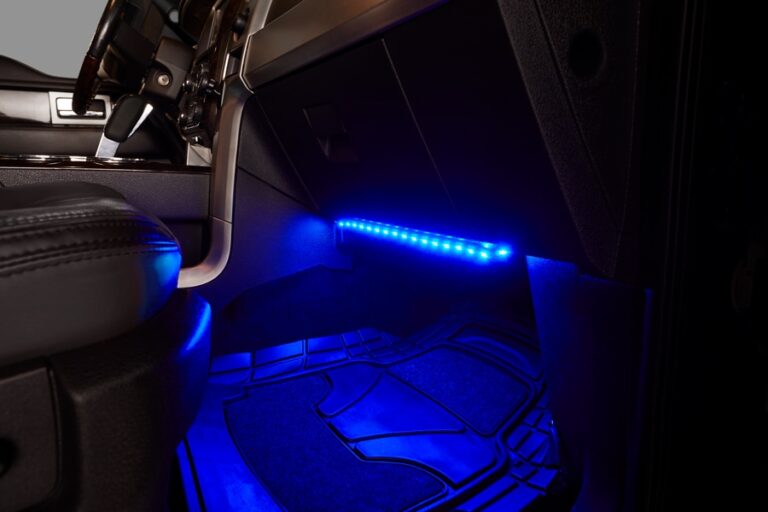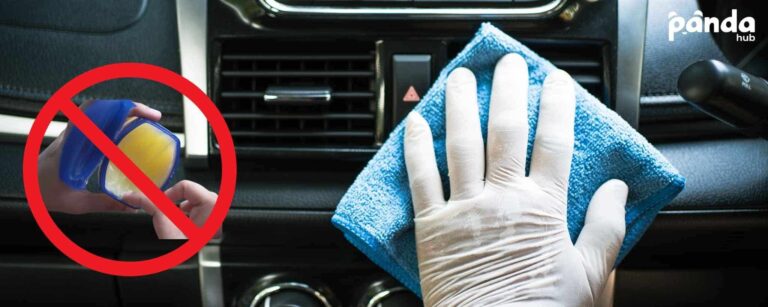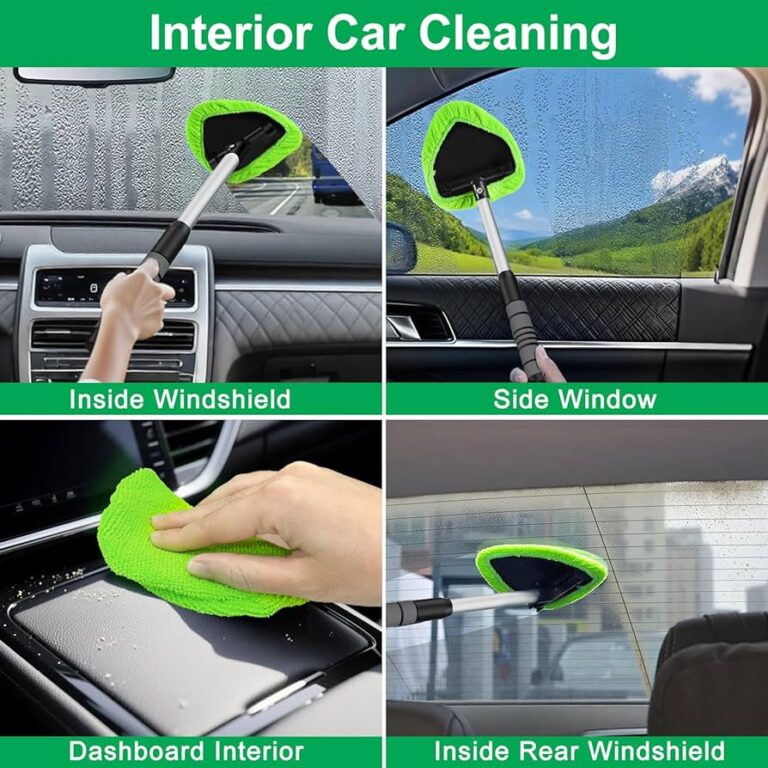If your car interior suddenly smells like gas, it’s more than just an annoying odor—it’s a warning sign you shouldn’t ignore. A gasoline smell inside the cabin usually points to a fuel leak, vapor buildup, or a problem with your fuel system. I’ve seen this countless times in my garage, and it can range from something minor like a loose fuel cap to something serious like a leaking fuel line or a faulty injector.
Gasoline fumes are highly flammable and can be harmful to breathe, so it’s not just about comfort—it’s a safety issue. In this article, I’ll break down the most common causes of a gas smell inside your car, how to diagnose the source, and what you can do to fix it before it turns into a bigger, more dangerous problem.

Image by mccarthyhyundai
What Causes a Gasoline Smell in Your Car?
Understanding the Fuel System
Your car’s fuel system is a complex network of components that store, deliver, and manage gasoline or diesel. It includes the fuel tank, pump, lines, injectors, and evaporative emissions (EVAP) system. Each part plays a critical role in ensuring fuel gets to the engine efficiently while keeping vapors contained. When any of these components fail, you might notice that telltale gas smell in your cabin.
Common Culprits for Gas Odors
In my experience, a gas smell usually points to one of these issues:
- Leaking fuel lines or fittings: Cracked or loose connections let fuel vapors escape.
- Faulty fuel tank or gas cap: A damaged tank or worn-out cap seal can release fumes.
- EVAP system issues: Components like the canister purge valve or charcoal canister can fail, letting vapors seep into the cabin.
- Fuel injector leaks: Worn O-rings or cracked injectors can leak fuel or vapors.
- Exhaust system leaks: In rare cases, unburned fuel vapors from a rich-running engine can mimic a gas smell.
Why It Matters
A gas smell isn’t just a nuisance—it’s a safety hazard. Gasoline vapors are highly flammable, and prolonged exposure can cause health issues like dizziness or nausea. Plus, leaks waste fuel, hurt performance, and can fail emissions tests. Catching the problem early saves you money and keeps your car reliable.
Diagnosing the Source of the Gas Smell
Step-by-Step Diagnosis
When I’m troubleshooting a gas smell, I start with a systematic approach. Here’s how you can do it in your garage:
- Check the gas cap: A loose or damaged cap is the easiest fix. Tighten it or inspect the rubber seal for cracks.
- Inspect under the hood: Look for wet spots, fuel stains, or corrosion around fuel lines, injectors, and the fuel rail.
- Examine the fuel tank: Crawl under the car (safely, with jack stands!) and check for leaks, rust, or damage on the tank.
- Test the EVAP system: Use a scan tool to check for codes like P0455 (EVAP leak) or P0442 (small EVAP leak).
- Listen for unusual sounds: A failing fuel pump might whine, hinting at pressure issues that could cause leaks.
Common Signs of Failure
- Visible leaks: Puddles under the car or wet spots on fuel lines.
- Check Engine Light: Codes related to EVAP or fuel system issues.
- Poor fuel economy: Leaks or rich-running conditions waste gas.
- Hiss or vacuum sound: A faulty gas cap or EVAP system might make noises when you open the fuel door.
Tools You’ll Need
- OBD-II scanner: To pull diagnostic codes (I use a BlueDriver, but any basic scanner works).
- Flashlight and inspection mirror: For checking hard-to-see areas.
- Jack and jack stands: For safe under-car inspections.
- Multimeter: To test electrical components like the purge valve.
Key Fuel System Spare Parts to Check
Let’s break down the most common spare parts involved in gas smell issues, why they fail, and how to replace them. I’ll also compare OEM vs. aftermarket options and share installation tips based on real-world experience.
Fuel Cap
What It Is and Does
The fuel cap seals the fuel tank, preventing vapors from escaping and maintaining pressure in the EVAP system. A good cap has a rubber gasket that forms an airtight seal.
Common Problems
- Cracked or worn gasket
- Loose or improperly threaded cap
- Corrosion from water or debris
When to Replace
Replace the cap if the gasket is damaged, it doesn’t click when tightened, or you get an EVAP-related check engine code (like P0457). A new cap costs $10–$30, so it’s a cheap first step.
OEM vs. Aftermarket
- OEM (e.g., Motorcraft, Mopar, ACDelco): Guaranteed fit for your vehicle (e.g., a Ford F-150 or Toyota Camry). More expensive but reliable.
- Aftermarket (e.g., Stant, Gates): Often cheaper ($10–$15) but check compatibility. I’ve seen some aftermarket caps fail to seal properly on GM trucks.
Installation Tips
- Ensure the cap’s threads match your fuel filler neck.
- Tighten until you hear a click (usually 2–3 clicks).
- Common Mistake: Overtightening can damage the threads or gasket, causing leaks.
Anecdote
I once had a customer with a Dodge Ram who swore their gas smell was a major leak. Turned out, their kid kept “helping” by loosening the cap after fill-ups. A $12 OEM cap fixed it in seconds.
| Part | OEM Price | Aftermarket Price | Pros | Cons |
|---|---|---|---|---|
| OEM Fuel Cap | $20–$30 | $10–$15 | Perfect fit, durable | Pricier |
| Aftermarket Fuel Cap | $10–$15 | $8–$12 | Affordable | Fit issues, shorter lifespan |
Fuel Lines
What They Are and Do
Fuel lines are steel, plastic, or rubber hoses that carry gasoline from the tank to the engine. They must withstand high pressure and resist corrosion.
Common Problems
- Cracks or pinholes from age or road debris
- Loose or corroded fittings
- Wear from heat or vibration
When to Replace
Replace fuel lines if you see visible leaks, smell gas under the hood, or notice fuel stains. Steel lines on older cars (like a ‘90s Honda Accord) often rust, while rubber hoses degrade over time.
OEM vs. Aftermarket
- OEM: Precise fit for your vehicle (e.g., GM or Toyota lines). Expect to pay $50–$200 depending on the car.
- Aftermarket: Brands like Dorman offer pre-bent steel lines or universal rubber hoses ($20–$100). Check for SAE J30R compliance for safety.
Installation Tips
- Use a flare nut wrench to avoid stripping fittings.
- Apply a thin layer of fuel-resistant sealant on connections.
- Common Mistake: Mixing up fuel feed and return lines—double-check your vehicle’s diagram.
- Secure lines away from heat sources like the exhaust.
Anecdote
I replaced the fuel lines on a customer’s Jeep Wrangler after they ignored a small leak. The undercarriage was a mess, and the repair cost $300 instead of $50 because the leak damaged other parts. Check small issues early!
EVAP Canister Purge Valve
What It Is and Does
The purge valve is part of the EVAP system, controlling the release of fuel vapors from the charcoal canister to the engine for burning. It’s usually near the intake manifold or throttle body.
Common Problems
- Stuck open/closed, causing vapors to escape
- Electrical failure (solenoid issues)
- Cracked housing from heat or age
When to Replace
Replace if you get codes like P0441 or P0456, or if you hear a hissing noise near the valve. Costs range from $30–$100.
OEM vs. Aftermarket
- OEM (e.g., Bosch, Delphi): Perfect fit, lasts 5–10 years. Pricier ($50–$100).
- Aftermarket (e.g., Standard Motor Products): Decent quality for $20–$50, but check reviews for reliability.
Installation Tips
- Disconnect the battery before working on electrical components.
- Use a scan tool to test the new valve after installation.
- Common Mistake: Not clearing OBD-II codes after replacement, which can keep the check engine light on.
Anecdote
A buddy brought his Ford Mustang to my shop with a gas smell. The purge valve was stuck open, flooding the cabin with vapors. A $40 aftermarket valve fixed it, but I had to reset the ECU to clear the code.
| Part | OEM Price | Aftermarket Price | Pros | Cons |
|---|---|---|---|---|
| OEM Purge Valve | $50–$100 | $20–$50 | Reliable, vehicle-specific | Expensive |
| Aftermarket Purge Valve | $20–$50 | $15–$30 | Affordable | Varying quality |
Fuel Injectors
What They Are and Do
Fuel injectors spray precise amounts of fuel into the engine’s cylinders. They rely on O-rings to seal and prevent leaks.
Common Problems
- Worn or cracked O-rings
- Clogged or leaking injectors
- Electrical issues causing improper spraying
When to Replace
Replace injectors if you smell gas under the hood, notice misfires, or see fuel leaks near the fuel rail. A single injector costs $50–$200, depending on the vehicle.
OEM vs. Aftermarket
- OEM (e.g., Denso, Bosch): Best for performance and longevity ($100–$200 each).
- Aftermarket: Brands like Beck/Arnley offer decent quality ($50–$100), but stick to reputable names to avoid clogs.
Installation Tips
- Replace O-rings with every injector swap (use fuel-resistant ones).
- Clean the fuel rail before reinstalling.
- Common Mistake: Not torquing bolts to spec, which can cause leaks.
Anecdote
I once worked on a Toyota Tacoma where a single leaky injector O-ring caused a strong gas smell. The customer thought it was a major issue, but a $5 O-ring and 30 minutes fixed it.
How to Spot Genuine vs. Fake Spare Parts
Counterfeit parts are a real problem, especially for fuel system components. Here’s how to avoid fakes:
- Check packaging: OEM parts have high-quality boxes with clear branding (e.g., Motorcraft for Ford, ACDelco for GM).
- Verify part numbers: Cross-reference with your vehicle’s manual or a trusted retailer like RockAuto or AutoZone.
- Inspect quality: Genuine parts have clean machining, no rough edges, and consistent logos.
- Buy from reputable sources: Stick to dealers, Amazon’s verified sellers, or auto parts stores like NAPA.
- Price red flags: If a $100 OEM part is listed for $20, it’s likely fake.
I learned this the hard way with a batch of “cheap” fuel injectors for a customer’s Subaru. They failed in a month, and I had to eat the cost of replacements. Always double-check your source.
Safety Tips for Fuel System Repairs
Working on fuel systems is no joke—gasoline is flammable, and mistakes can be dangerous. Here’s what I always do:
- Work in a well-ventilated area, away from sparks or open flames.
- Disconnect the battery to avoid electrical shorts.
- Keep a fire extinguisher rated for gasoline fires nearby.
- Wear nitrile gloves to protect your skin from fuel.
- Relieve fuel system pressure before disconnecting lines (check your vehicle’s manual for the procedure).
Maintenance Tips to Prevent Gas Smells
To keep your fuel system in top shape:
- Replace the gas cap every 5–7 years or if the seal looks worn.
- Inspect fuel lines annually, especially on older cars or in salty climates.
- Use a fuel system cleaner (like Seafoam or Chevron Techron) every 10,000 miles to prevent injector clogs.
- Check your EVAP system during routine maintenance—codes can catch issues early.
- Fill up with quality fuel from reputable stations to avoid contaminants.
Conclusion
A gasoline smell in your car’s interior is a warning sign you can’t ignore. Whether it’s a $10 gas cap or a $200 fuel injector, catching the problem early saves you from bigger headaches like fires, failed emissions tests, or a trashed engine. Start with the simple stuff—check the gas cap, inspect for leaks, and pull any diagnostic codes. When replacing parts, weigh OEM vs. aftermarket based on your budget and vehicle needs, but always buy from trusted sources to avoid fakes.
FAQ
Why does my car smell like gas only when I start it?
This could be a leaky fuel injector or a stuck EVAP purge valve flooding the engine with vapors on startup. Check for wet spots under the hood and pull OBD-II codes to confirm.
Can a bad gas cap really cause a gas smell?
Absolutely. A worn or loose cap lets vapors escape from the tank, which can seep into the cabin. It’s a cheap fix, so start here.
How do I know if my fuel lines are leaking?
Look for puddles under the car, fuel stains on the lines, or a strong gas smell under the hood or near the tank. A pressure test can confirm leaks.
Are aftermarket fuel system parts safe to use?
Yes, if you stick to reputable brands like Dorman, Bosch, or Stant. Check reviews and ensure they meet SAE standards for fuel systems.
What’s the cost to fix a gas smell in my car?
It depends on the issue. A gas cap is $10–$30, fuel lines are $50–$200, and injectors or purge valves run $50–$200 each. Labor adds $100–$500 if you go to a shop.



